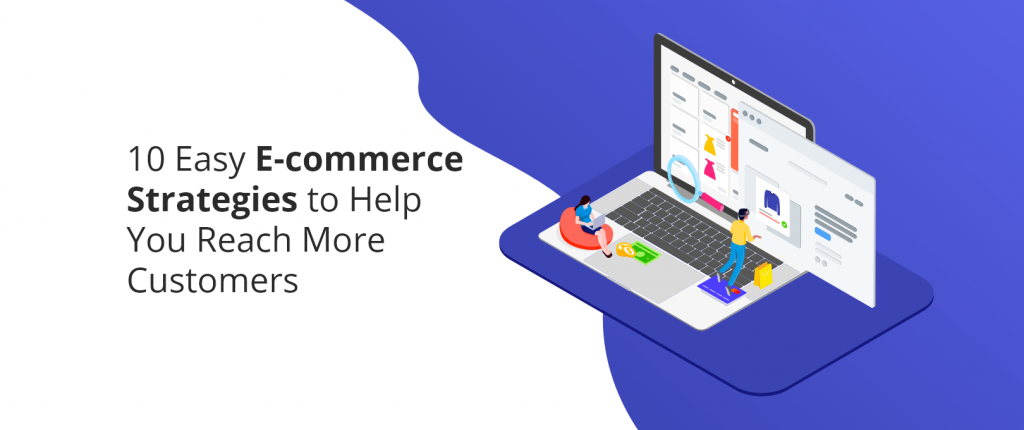How to Set Smart Goals for E-Commerce Growth in 2025
To succeed in today’s hyper-competitive digital market, setting the right goals and collecting actionable data is crucial. This guide will help you align your business objectives with measurable e-commerce KPIs across the full customer lifecycle—from acquisition to referral.
1. Acquisition: Where Do Your Customers Come From?
Goal: Grow Targeted Website Traffic from High-Performing Channels
To increase traffic and get quality leads, focus on multi-channel acquisition:
Organic SEO: Ensure your site is fully optimized for search engines.
Paid Ads: Monitor ROI across Google Ads, Facebook Ads, and Display Networks.
Referral Traffic: Use BuzzSumo to identify content opportunities that drive backlinks.
Email Marketing: Analyze open/click rates and refine segmentation.
Influencer Marketing: Collaborate with niche-specific social influencers.
Google Search Console: Audit keywords, fix indexation issues, track CTR by page.
Tools to Implement:
Google Analytics 4
Google Search Console
BuzzSumo
Facebook/Google Ad accounts integration
If you’re launching campaigns or scaling operations, consider our Custom Analytics & Tracking Setup for E-Commerce to ensure you’re capturing the right data and gaining full visibility into your acquisition channels.
2. Activation: Turning Visitors into Engaged Users
Goal: Optimize the First Experience to Drive Action
The user’s initial experience must lead to meaningful interaction—newsletter signup, product view, adding to cart, or trying a demo.
Key Tactics:
Homepage Mouse Tracking & Scroll Heatmaps (Hotjar)
Exit-Intent Lead Captures (offer discounts or freebies)
User Testing & Live Chat: Understand blockers and drop-off points
On-page SEO Audit: Ensure content is accessible, fast, and structured
Usability Evaluation: Evaluate load speed, mobile UX, and layout clarity
Activation Metrics:
Bounce Rate
Time on Site
Click-through Rates (CTRs)
Signups or Product Views per Session
For businesses experiencing high traffic but low sales, our E-Commerce Funnel Optimization Audit can identify exactly where visitors drop off and how to fix your sales funnel to increase conversions.
3. Retention: Keeping Customers Coming Back
Goal: Improve Repeat Customer Rate
Returning customers are more profitable. Make their experience enjoyable and rewarding.
Key Tactics:
Create Personalized Experiences with product recommendations using past purchase data
Offer Loyalty Programs & Rewards
Use Cohort Analysis (GA4) to track behavior of return visitors
Build User Communities & Support Forums
Proactive Customer Support via AI Chatbots
Tools to Implement:
Conversific for e-commerce retention metrics
GA4 cohort reports
Automated email remarketing (e.g., Klaviyo, Mailchimp)
Boost your repeat sales with our Retention & Loyalty System Setup that automates personalized email flows and loyalty programs designed to keep customers engaged long-term.
4. Revenue: Streamline the Path to Purchase
Goal: Maximize Conversion Rates and Average Order Value (AOV)
Once a customer is engaged, the goal is conversion. Use data to find and fix leaks in your funnel.
Key Audits:
Sales Funnel Audit: Visualize the journey from landing to checkout
Shopping Cart Abandonment Audit
Checkout Abandonment Rate
Cart-to-Detail and Buy-to-Detail Rate Tracking
Tactics to Increase Revenue:
Offer product bundles or volume discounts
Use urgency triggers (low stock, timers)
Feature high-margin items
Display user reviews & social proof
Optimize checkout experience for fewer clicks
Tools to Implement:
Google Optimize (for A/B testing)
KissMetrics (for marketing funnel analytics)
Google Analytics Enhanced Ecommerce
Hotjar (cart abandon insights)
5. Referral: Turn Customers into Advocates
Goal: Build Organic Growth Through Word-of-Mouth
Happy customers should bring in new business. Incentivize referrals and amplify brand love.
Tactics:
Implement a Referral Program (discounts or credits for inviting friends)
Encourage social sharing with UGC campaigns
Track Net Promoter Score (NPS)
Collect reviews and testimonials regularly
Identify top fans and turn them into ambassadors
Collecting the Right Data: Foundational Tools You Need
To track and act on the strategies above, these tools must be part of your stack:
✅ Google Analytics 4 (with e-commerce tracking enabled)
✅ Google Search Console
✅ Google Optimize
✅ Hotjar (Heatmaps, Recordings, Polls)
✅ Conversific (e-commerce dashboards)
✅ Lead capture tools (Sleeknote, OptinMonster)
✅ BuzzSumo (for content & influencer insights)
✅ KissMetrics (funnel & cohort tracking)
Analyze for Action: What to Do with the Data
Use the collected data to:
Visualize key performance indicators (KPIs) with dashboards
Personalize shopping experiences based on behavior
Improve website conversion by targeting friction points
Highlight underperforming channels/products for optimization
Discover new product opportunities from internal search terms
Forecast trends and prepare proactive business decisions
E-Commerce Competitor Analysis
Stay ahead by regularly benchmarking competitors:
Categorize: Primary (direct), Secondary (niche), Tertiary (indirect)
Audit Their Website: Design, UX, checkout, speed
Assess Their SEO & Content: Use SEMrush or Ahrefs
Analyze Ad Strategies: Facebook Ad Library, Google Transparency Report
Pricing Strategy: Discounts, bundles, shipping policies
Customer Experience: Read reviews & social comments
Acquisition Metrics: Traffic sources, conversion rates, ROAS
Gain a competitive edge with our Competitor Intelligence Report (E-Commerce Edition) that provides deep insights into your rivals’ strategies, helping you position your store for maximum impact.
Final Thoughts
E-commerce in 2025 demands data-driven decision-making. Align your efforts with AARRR goals and consistently audit your performance. With the right tools and a clear strategy, you can build a thriving, customer-focused online business that scales sustainably.
